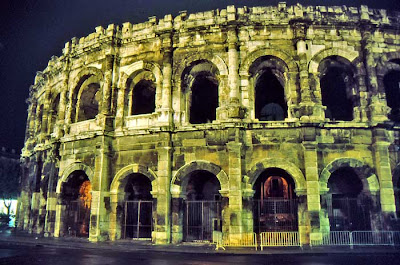This week's word is food-related. Food and language - a great combination !
 Since moving to France, I have seen crosnes every now and then in the supermarket, but until recently I didn't know what they were for or even what they were called. They kind of look like something a Klingon might eat, except that unlike gagh, they're not alive...
Since moving to France, I have seen crosnes every now and then in the supermarket, but until recently I didn't know what they were for or even what they were called. They kind of look like something a Klingon might eat, except that unlike gagh, they're not alive...One day, while watching a tv cooking show about légumes oubliés, or "forgotten vegetables," I saw these little tubers and learned that they are called crosnes.
They originated in China or Japan and were introduced to France in the 19th century. They are the tubers of a plant in the mint family and are called crosnes because that is the name of the town where they were first cultivated in France. Crosnes are a bit crunchy (but tender when cooked) and taste subtly of artichoke. They can also be eaten raw in salads.
I decided that I wanted to taste them, so I started looking for them this season in the markets to no avail. It seemed as though there were no crosnes this year. But just last Saturday Ken found some at our local farmers' market in Saint-Aignan and he bought some. Our house guest, Peter Hertzmann, cooked them by par-boiling them and then sautéing them in butter. He served them seasoned with salt and pepper alongside brussels sprouts and Aveyron sausages. They were delicious !
























































